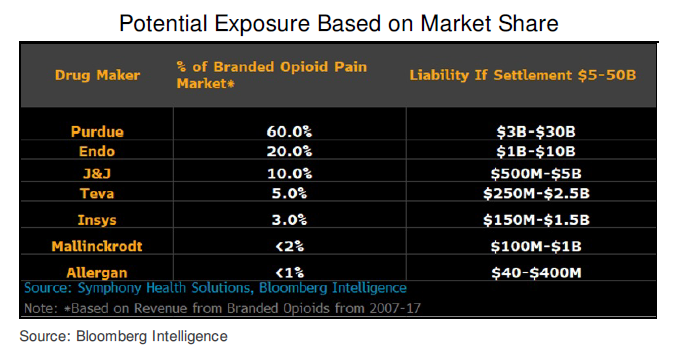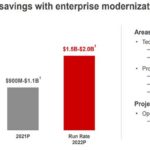It is hard to predict what will happen in the coming years for JNJ regarding the opioids lawsuits… but below are some information that hopefully will help understand the situation:
JNJ had a 10% market share in the branded opioid market, with a settlement liability estimated between $500M and $5B (per Bloomberg). This analysis is based on prior tobacco settlements and costs. Recently competitor Teva (5% market share) settled in Oklahoma for $85M (Bloomberg sees a $250M-$2.5B settlement risk nationwide for Teva). Based on JNJ financials, the settlement amount would not cause bankruptcies risks (only minor impact on EPS based on Bloomberg’s dollar settlement assumptions), but it is hard to assess reputation risks for JNJ going forward.

The company have this information on their website:
https://www.jnj.com/addressing-flawed-reporting-on-opiod-supply
"Addressing Flawed Reporting on Opioid Supply You may have seen media coverage on ongoing litigation related to opioid-based prescription pain medicines. Plaintiffs’ attorneys are distorting the facts on the way heavily regulated raw materials and Active Pharmaceutical Ingredients (APIs) were supplied by former subsidiaries of Johnson & Johnson for use in other manufacturers’ opioid-based pain medications.
We want to be clear – these allegations are false. The facts are:
1. At every step of the process, we adhered to all laws and regulations on the manufacturing, sale, and distribution of APIs and the raw materials used in their manufacture, and we produced APIs and raw materials in accordance with quotas established by the U.S. Drug Enforcement Agency (DEA).
Johnson & Johnson previously owned two subsidiaries, Noramco and Tasmanian Alkaloids, involved in the production of controlled raw materials and APIs used to manufacture prescription pain medications. This manufacturing process is strictly regulated, limited and monitored by the DEA and global authorities. They enforce regulations and set distribution quotas based on their assessment of the need for medicines containing these substances, and our businesses always complied with these rules.
Critically, as a supplier, we did not have any role in the manufacturing, sales, or marketing of the finished products of other manufacturers.
2. We no longer own these subsidiaries, and we do not promote any opioid pain medications in the U.S.
Johnson & Johnson divested Noramco and Tasmanian Alkaloids in July 2016 to focus our attention on other areas of significant unmet medical need.
While we continue to work with stakeholders to support the safe and appropriate use of prescription pain medications, we do not actively promote these medications in the U.S.
3. Although we do not promote prescription medicines containing opioids in the U.S., we believe they play an important role in appropriate pain treatment for some patients, many of whom have no viable alternatives.
Opioid pain medicines give patients and physicians valuable options to help manage the debilitating effects of serious pain. We support the tight control of these medications and their related ingredients. Opioid abuse is a serious problem, and there is consensus among the global healthcare community that we must strike the right balance between offering legitimate pain relief and preventing abuse.
Our priority is to always provide accurate information on our medicines to physicians, so they can make the best and safest choices in partnership with their patients. We acted responsibly in the marketing and promotion of our products and will continue to defend Johnson & Johnson against baseless and unsubstantiated allegations.
Although these issues remain incredibly complex and challenging, we’re committed to being part of the conversation and part of the solution."
[tag JNJ]
Julie S. Praline
Director, Equity Analyst
Direct: 617.226.0025
Fax: 617.523.8118
Crestwood Advisors
One Liberty Square
Suite 500
Boston, MA 02109
www.crestwoodadvisors.com





